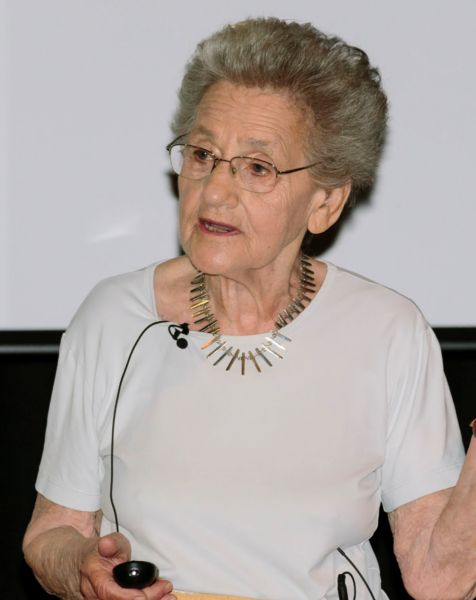Obituary
Recalling the life of Dr Olga Kennard

Dr Olga Kennard (Lady Burgen) died in March, three weeks shy of her 99th birthday. The widow of pharmacologist and former Master of Darwin Sir Arnold Burgen, who died last year, she was a pioneering scientist who overcame the limitations imposed on women’s careers to leave a significant and lasting legacy in the world of chemistry.
Born in Budapest in 1922, Olga Weisz was the eldest of three children, the daughter of a merchant banker and an antiques dealer. The family fled growing antisemitism in Hungary in 1939, arriving in the UK just two weeks before the outbreak of the Second World War. Olga completed her schooling at grammar schools in Hove and Evesham, and in 1942 came to Cambridge to read Natural Sciences at Newnham College.
After completing her studies, four years before women were officially granted degrees by the University, she joined the Cavendish Laboratory where she worked with Max Perutz on the structure of haemoglobin and completed the lab’s first x-ray structure of a small organic molecule.
Moving to London to join the scientific staff of the Medical Research Council, Olga established a crystallographic laboratory and began to bring together experimental crystallographic data.
Olga returned to Cambridge in 1962 following the end of her marriage to Dr David Kennard, with whom she had two daughters. Persuading the Department of Chemistry to invest in a diffractometer to analyse the structure of small molecules, she established the Cambridge Crystallographic Data Centre (CCDC) in 1965. The CCDC, which she directed until 1997, became a globally essential resource, facilitating research in pharmaceuticals, agrochemicals, materials, and commercial and academic applications. In 1992 the CCDC moved to a purpose-built (and award-winning) building commissioned by Olga. It logged its millionth chemical structure in 2019.
Olga remained officially on secondment from the MRC throughout her career, never formally holding a Cambridge University position, although the University awarded her a doctorate of science in 1973 and she became a Fellow of Lucy Cavendish College. She was elected as one of the first female Fellows of the Royal Society in 1987, and a Royal Society Olga Kennard Research Fellowship was established in her name.
In 1988 she was awarded an OBE for services to scientific research on the structure of biological molecules, and in 1993 she was elected as a member of the Academia Europaea. The German Chemical Society awarded her the Gmelin-Beilstein Memorial Medal for her outstanding contribution to chemistry in 2007. Shortly before her death, she received notification that she was to receive the Gregori Aminoff Prize, awarded by the Royal Swedish Academy of Sciences.
Beyond science, Olga maintained strong interests in art, architecture and design throughout her life, serving as a trustee of the British Museum from 2004-12. She was a valued and engaged member of the Beth Shalom Reform community in Cambridge, particularly involved in the building of the community’s first permanent synagogue in 2015.
Olga is survived by her daughters, Susie and Julia, and by her five grandchildren.
